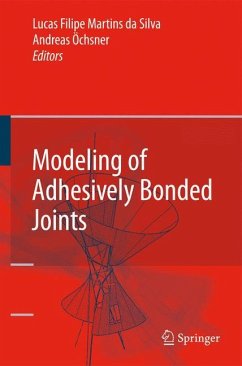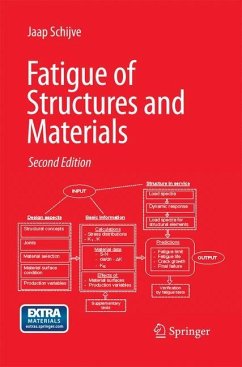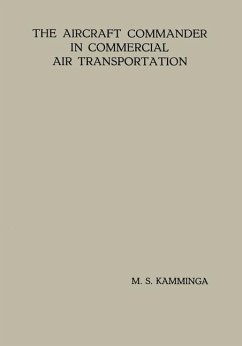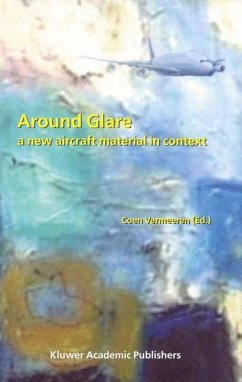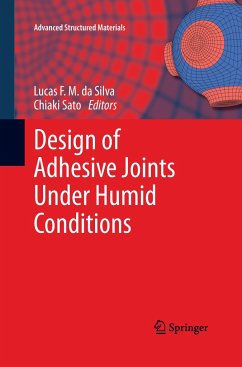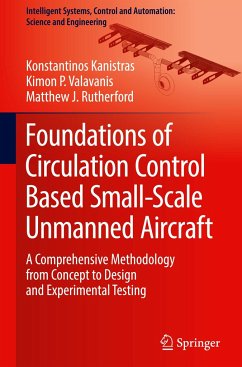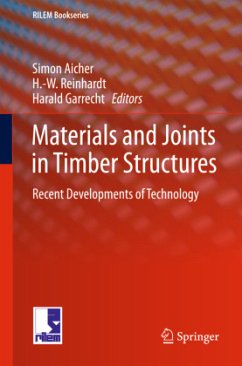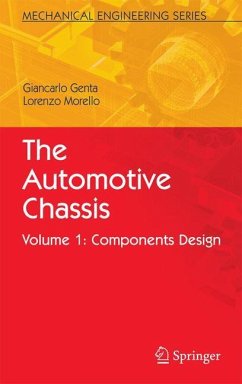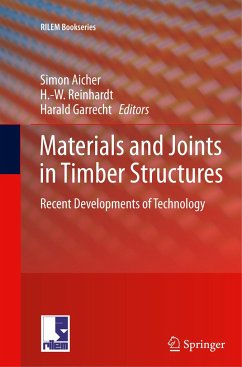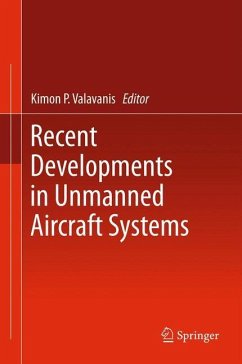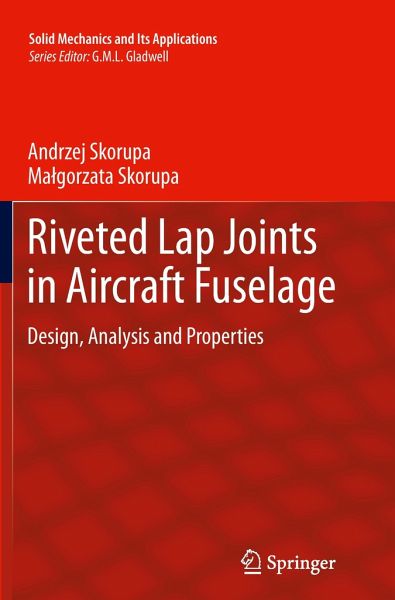
Riveted Lap Joints in Aircraft Fuselage
Design, Analysis and Properties
Versandkostenfrei!
Versandfertig in 6-10 Tagen
121,99 €
inkl. MwSt.
Weitere Ausgaben:

PAYBACK Punkte
61 °P sammeln!
Fatigue of the pressurized fuselages of transport aircraft is a significant problem all builders and users of aircraft have to cope with for reasons associated with assuring a sufficient lifetime and safety, and formulating adequate inspection procedures. These aspects are all addressed in various formal protocols for creating and maintaining airworthiness, including damage tolerance considerations. In most transport aircraft, fatigue occurs in lap joints, sometimes leading to circumstances that threaten safety in critical ways. The problem of fatigue of lap joints has been considerably enlarg...
Fatigue of the pressurized fuselages of transport aircraft is a significant problem all builders and users of aircraft have to cope with for reasons associated with assuring a sufficient lifetime and safety, and formulating adequate inspection procedures. These aspects are all addressed in various formal protocols for creating and maintaining airworthiness, including damage tolerance considerations. In most transport aircraft, fatigue occurs in lap joints, sometimes leading to circumstances that threaten safety in critical ways. The problem of fatigue of lap joints has been considerably enlarged by the goal of extending aircraft lifetimes.
Fatigue of riveted lap joints between aluminium alloy sheets, typical of the pressurized aircraft fuselage, is the major topic of the present book. The richly illustrated and well-structured chapters treat subjects such as: structural design solutions and loading conditions for fuselage skin joints; relevance of laboratory test results for simple lap joint specimens to riveted joints in a real structure; effect of various production and design related variables on the riveted joint fatigue behaviour; analytical and experimental results on load transmission in mechanically fastened lap joints; theoretical and experimental analysis of secondary bending and its implications for riveted joint fatigue performance; nucleation and shape development of fatigue cracks in riveted longitudinal lap joints; overview of experimental investigations into the multi-site damage for full scale fuselage panels and riveted lap joint specimens; fatigue crack growth and fatigue life prediction methodology for riveted lap joints; residual strength predictions for riveted lap joints in a fuselage structure. The major issues of each chapter arerecapitulated in the last section.
Fatigue of riveted lap joints between aluminium alloy sheets, typical of the pressurized aircraft fuselage, is the major topic of the present book. The richly illustrated and well-structured chapters treat subjects such as: structural design solutions and loading conditions for fuselage skin joints; relevance of laboratory test results for simple lap joint specimens to riveted joints in a real structure; effect of various production and design related variables on the riveted joint fatigue behaviour; analytical and experimental results on load transmission in mechanically fastened lap joints; theoretical and experimental analysis of secondary bending and its implications for riveted joint fatigue performance; nucleation and shape development of fatigue cracks in riveted longitudinal lap joints; overview of experimental investigations into the multi-site damage for full scale fuselage panels and riveted lap joint specimens; fatigue crack growth and fatigue life prediction methodology for riveted lap joints; residual strength predictions for riveted lap joints in a fuselage structure. The major issues of each chapter arerecapitulated in the last section.





